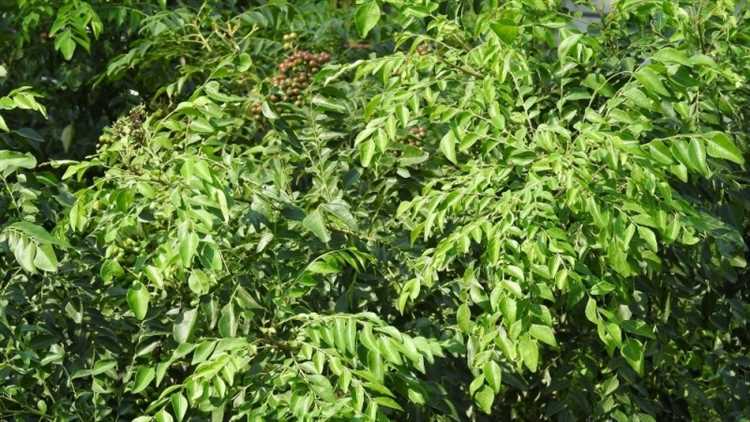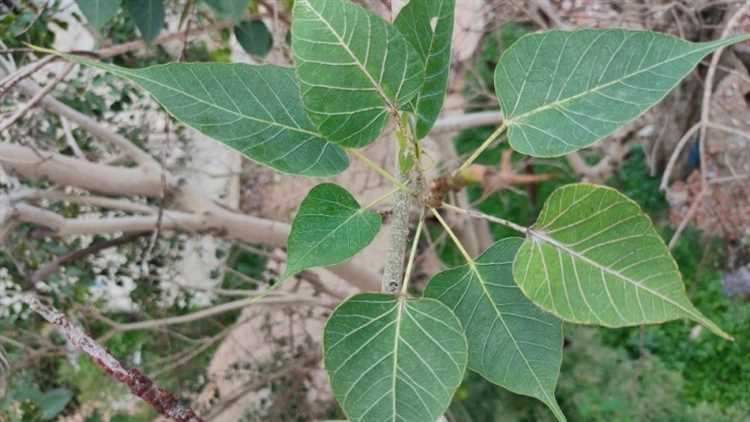
Oxygen is a vital element for all living organisms, including humans. It is produced mainly through the process of photosynthesis, where plants convert carbon dioxide into oxygen. While all trees contribute to the production of oxygen, some species are more efficient than others. In this article, we will explore the most oxygen-producing trees and understand why they play a crucial role in maintaining a healthy environment.
One of the most prolific oxygen producers is the Amazon Rainforest, often referred to as the “lungs of the Earth.” This vast region is home to numerous tree species, including the mighty Amazonian trees. These trees, such as the Brazil nut tree and the Kapok tree, have large canopies that cover vast areas, allowing them to absorb large amounts of carbon dioxide and release oxygen back into the atmosphere.
Another oxygen powerhouse is the Oak tree, a common sight in many parts of the world. Oak trees are known for their longevity and ability to thrive in different climates. These trees have a high rate of photosynthesis and can produce a significant amount of oxygen throughout their lifespan. The oak tree’s dense foliage and extensive root system make it an excellent choice for improving air quality and providing a habitat for various wildlife species.
The Pine tree is also a significant contributor to oxygen production. Pine trees are known for their tall trunks and needle-like leaves. These leaves have a thick waxy coating, which helps the tree conserve water and withstand harsh conditions. The unique structure of pine needles allows them to maximize their surface area exposed to sunlight, making them efficient oxygen producers. They are particularly valuable in cold and arid regions where other tree species may struggle to survive.
- The Most Oxygen Producing Trees:
- Which Trees Produce the Most Oxygen?
- Araucaria:
- White Oak:
- Giant Sequoia:
- Black Cherry:
- Sycamore:
- The Alpine Ash Tree:
- The Black Poplar Tree:
- The Indian Banyan Tree:
- Oxygen Production:
- Cultural Significance:
- The Siberian Pea Tree:
- The American Sycamore Tree:
- Benefits of the American Sycamore Tree:
- Caring for the American Sycamore Tree:
- The Australian Eucalyptus Tree:
- Q&A:
- Which trees produce the most oxygen?
- How do trees produce oxygen?
- Why is it important that trees produce oxygen?
- How many trees are needed to produce enough oxygen for one person?
The Most Oxygen Producing Trees:
When it comes to oxygen production, some trees outshine the rest. These trees are known for their ability to release large amounts of oxygen into the atmosphere, making them crucial for maintaining a healthy ecosystem.
One of the top oxygen-producing trees is the Amazon Rainforest’s humble saintwood tree. With its large canopy and dense foliage, it is estimated that a single saintwood tree can produce up to 260 kilograms of oxygen per year. This makes it one of the most efficient oxygen producers in the world.
Another notable oxygen-producing tree is the Australian Eucalyptus tree. With over 700 species, the Eucalyptus is known for its high oxygen production and its ability to adapt to various climates. It is estimated that a mature Eucalyptus tree can produce between 80 and 250 kilograms of oxygen per year.
The Cedar tree, which is native to the Mediterranean region, is another exceptional oxygen producer. With its dense foliage and ability to withstand harsh conditions, a mature Cedar tree can produce between 118 and 194 kilograms of oxygen per year.
The Pine tree is also a significant oxygen producer, with different species found all over the world. One mature Pine tree is known to produce about 75 kilograms of oxygen per year.
Lastly, the Oak tree deserves a mention for its contribution to oxygen production. These majestic trees, known for their longevity and strength, can produce between 21 and 30 kilograms of oxygen per year.
These are just a few examples of trees that play an important role in oxygen production. Protecting and preserving these oxygen-producing trees is crucial for maintaining a healthy atmosphere and combating global warming.
Which Trees Produce the Most Oxygen?
When it comes to producing oxygen, some trees are more efficient than others. Here are some of the trees that produce the most oxygen:
-
Araucaria:
Also known as the Norfolk Island Pine, the Araucaria is a large evergreen tree that is native to Norfolk Island in the Pacific Ocean. It is known for its ability to generate large amounts of oxygen through photosynthesis.
-
White Oak:
The White Oak is a majestic tree that can grow up to 100 feet tall with a spread of up to 80 feet. It is commonly found in North America and is known for its strong wood as well as its oxygen-producing capabilities.
-
Giant Sequoia:
As its name suggests, the Giant Sequoia is one of the largest trees in the world. Native to California, this tree can live for thousands of years and produces a substantial amount of oxygen. It is a symbol of longevity and strength.
-
Black Cherry:
The Black Cherry tree is native to North America and is known for its beautiful white flowers and delicious cherries. It is also an excellent producer of oxygen and promotes a healthy ecosystem.
-
Sycamore:
The Sycamore tree is a fast-growing deciduous tree that is native to Europe and parts of Asia. It is known for its distinct patchy bark and large leaves. This tree is an efficient oxygen producer and is often planted in urban areas to improve air quality.
While these trees are known for their oxygen-producing capabilities, it is important to remember that all trees play a vital role in maintaining a healthy environment by absorbing carbon dioxide and releasing oxygen.
The Alpine Ash Tree:

The Alpine Ash (Eucalyptus delegatensis) is a species of eucalyptus tree that is native to the Australian Alps. It is a tall, evergreen tree that can reach heights of up to 70 meters. The Alpine Ash tree is known for its ability to produce large amounts of oxygen, making it an important contributor to the Earth’s oxygen supply.
One of the reasons why the Alpine Ash tree is such a prolific oxygen producer is because of its large canopy. The canopy of the tree is made up of dense, dark green leaves that are rich in chlorophyll. These leaves absorb sunlight and use photosynthesis to convert carbon dioxide into oxygen.
Another factor that contributes to the Alpine Ash tree’s oxygen production is its fast growth rate. The tree can grow up to 1 meter per year, allowing it to produce a significant amount of oxygen in a relatively short amount of time.
The Alpine Ash tree also plays an important role in the ecosystem as a habitat for various wildlife species. Birds, mammals, and insects rely on the tree for food and shelter, making it an essential part of the local ecosystem.
Overall, the Alpine Ash tree is one of the most oxygen-producing trees in the world. Its large canopy, fast growth rate, and importance in the ecosystem make it a vital contributor to the Earth’s oxygen supply.
The Black Poplar Tree:
The Black Poplar tree (Populus nigra) is a tall deciduous tree that is native to Europe and Asia. It is known for its ability to produce a large amount of oxygen, making it one of the most oxygen-producing trees in the world.
The Black Poplar tree can grow up to 30 meters in height and has a wide spreading crown. It has dark grayish-brown bark with deep furrows and thick branches. The leaves of the Black Poplar tree are ovate and have a glossy green color.
One of the unique characteristics of the Black Poplar tree is its ability to tolerate a wide range of growing conditions. It can adapt to different soil types and is tolerant of both drought and flooding. This makes it a suitable choice for planting in urban areas, where the air quality is often poor.
In addition to its oxygen-producing capabilities, the Black Poplar tree offers other benefits to the environment. Its roots help stabilize the soil and prevent erosion, while its dense foliage provides shade and reduces heat island effect in cities.
The Black Poplar tree has long been used for various purposes. Its wood is lightweight and easy to work with, making it suitable for making furniture, crates, and pallets. The bark of the Black Poplar tree has medicinal properties and has been used in traditional medicine for treating various ailments.
Overall, the Black Poplar tree is a valuable tree species that not only produces a significant amount of oxygen but also provides numerous environmental and economic benefits. Its ability to thrive in different conditions and its long history of use make it a popular choice for planting in various landscapes.
The Indian Banyan Tree:
The Indian Banyan Tree, scientifically known as Ficus benghalensis, is a species of fig tree native to the Indian subcontinent. It is one of the most iconic and revered trees in Indian culture and has great significance in Hindu mythology.
The Indian Banyan Tree is a large, evergreen tree that can grow up to 70 feet tall and spread over a wide area. It has a thick, spreading canopy with large, leathery leaves that provide shade and shelter.
Oxygen Production:
Like other trees, the Indian Banyan Tree plays a vital role in oxygen production and carbon dioxide absorption. Its large size and dense foliage allow it to produce a significant amount of oxygen and contribute to clean air.
One unique feature of the Indian Banyan Tree is its ability to grow aerial prop roots that hang from its branches and eventually reach the ground. These prop roots not only anchor the tree but also serve as additional support and nutrient absorption. They can develop into new trunks, effectively making the tree expand and form a dense, interconnected network.
This expansive network of roots and trunks enables the Indian Banyan Tree to have a high oxygen-producing capacity compared to other trees. It can provide oxygen for a large area, making it a valuable contributor to maintaining the air quality in its surroundings.
Cultural Significance:
In Indian culture, the Indian Banyan Tree holds immense cultural and religious significance. It is often considered sacred and is frequently found near temples and other holy sites. The tree’s numerous prop roots and interconnected trunks symbolize unity, strength, and interconnectedness.
Legend has it that Lord Buddha attained enlightenment under the shade of a giant banyan tree, which has led to its association with wisdom and spiritual growth.
With its remarkable size, oxygen-producing abilities, and cultural importance, the Indian Banyan Tree is undoubtedly one of the most impressive and valued trees in the world.
The Siberian Pea Tree:

The Siberian Pea Tree, also known as Caragana arborescens, is a species of deciduous shrub that is native to Siberia and Mongolia. Despite its name, it is not a true pea tree but belongs to the legume family.
This tree is known for its ability to fix nitrogen in the soil, which makes it a valuable addition to gardens and landscapes. Nitrogen fixation is the process by which certain plants convert atmospheric nitrogen into a form that can be used by other plants.
The Siberian Pea Tree has yellow flowers that bloom in late spring, attracting pollinators such as bees and butterflies. It produces pea-like pods that contain seeds, which can be used for food or for replanting. The leaves are small and fern-like, adding an attractive texture to the tree.
In terms of oxygen production, the Siberian Pea Tree is considered to be one of the most productive trees. It has a high rate of photosynthesis, which is the process by which plants convert carbon dioxide into oxygen. This makes it an excellent choice for improving air quality and creating a more oxygen-rich environment.
Additionally, the Siberian Pea Tree is tolerant of a wide range of soil conditions and can withstand harsh climates, including cold winters and dry summers. It is a hardy and low-maintenance tree that requires minimal care.
Overall, the Siberian Pea Tree is a versatile and highly beneficial tree. It not only produces an abundance of oxygen but also provides habitat for wildlife, improves soil fertility, and adds beauty to any landscape.
The American Sycamore Tree:
The American Sycamore tree, scientifically known as Platanus occidentalis, is a large deciduous tree native to North America. It is one of the most abundant and widespread trees in the eastern United States, often found in floodplains and alongside streams and rivers.
The American Sycamore tree is highly valued for its environmental benefits, including its remarkable ability to produce oxygen. Through the process of photosynthesis, the leaves of the American Sycamore tree convert carbon dioxide into oxygen, making it an important contributor to clean air.
One of the reasons the American Sycamore is such an efficient oxygen producer is due to its large size and extensive canopy. With its broad leaves and expansive branches, the tree is able to capture a significant amount of sunlight, which is essential for photosynthesis to occur.
Benefits of the American Sycamore Tree:
In addition to its oxygen-producing capabilities, the American Sycamore tree offers numerous other benefits. Its dense foliage provides shade, helping to cool the surrounding area, reducing energy consumption in nearby buildings. The tree also provides habitat and food for various wildlife species, making it an important component of various ecosystems.
Caring for the American Sycamore Tree:
To ensure the health and vitality of the American Sycamore tree, proper care and maintenance are essential. It is important to provide regular watering, especially during dry periods, and ensure that the tree has enough space to grow and spread its branches without obstruction.
In conclusion, the American Sycamore tree is a remarkable species that not only adds beauty to the landscape but also plays a significant role in oxygen production. Its ability to capture sunlight and convert carbon dioxide into oxygen makes it an invaluable tree for promoting clean air and a healthy environment.
The Australian Eucalyptus Tree:
The Australian Eucalyptus tree, also known as the gum tree, is one of the most iconic trees found in Australia. There are more than 700 species of eucalyptus trees, making them incredibly diverse and adaptable. These trees are well-known for their unique appearance and distinct fragrance.
Eucalyptus trees are highly valued for their ability to produce a significant amount of oxygen. They are considered one of the most oxygen-producing tree species in the world. These trees have efficient photosynthesis processes that enable them to produce oxygen at a faster rate than many other tree species.
One of the reasons why eucalyptus trees produce so much oxygen is because of their extensive leaf surface area. The leaves of these trees are generally long, narrow, and leathery, allowing for a larger surface area exposed to sunlight. This maximizes their ability to capture carbon dioxide and release oxygen through photosynthesis.
In addition to their oxygen-producing capabilities, eucalyptus trees also provide numerous other benefits. They are known for their ability to absorb large amounts of carbon dioxide, making them valuable in reducing greenhouse gas emissions. The essential oils extracted from eucalyptus leaves are widely used in various industries, including medicine and perfume production.
It is important to note that planting eucalyptus trees outside their natural habitat can have negative ecological impacts. These trees have a high demand for water and nutrients, which can disrupt native ecosystems and compete with other plant species for resources. Therefore, it is essential to carefully consider the environmental implications before planting eucalyptus trees in non-native areas.
In conclusion, the Australian Eucalyptus tree is a remarkable species known for its oxygen-producing abilities and unique characteristics. While they play a crucial role in maintaining oxygen levels and provide various benefits, it is vital to understand their ecological impact when considering their cultivation outside their natural habitat.
Q&A:
Which trees produce the most oxygen?
According to research, some of the trees that produce the most oxygen include the Amazon rainforest trees such as the Brazil nut tree, the kapok tree, and the rubber tree. Other oxygen-producing trees include the cedar, the silver birch, and the weeping willow.
How do trees produce oxygen?
Trees produce oxygen through a process called photosynthesis. They take in carbon dioxide from the air and, using energy from sunlight, convert it into oxygen and glucose. The oxygen is then released back into the air.
Why is it important that trees produce oxygen?
Oxygen is essential for the survival of all living organisms. It is necessary for our respiratory system to function properly. Trees play a crucial role in producing oxygen, as they are the largest source of oxygen production on our planet. Without trees, the level of oxygen in the atmosphere would decrease significantly, leading to adverse effects on human and animal health.
How many trees are needed to produce enough oxygen for one person?
The exact number of trees needed to produce enough oxygen for one person can vary depending on the oxygen requirements of the individual and the type and size of the trees. However, on average, it is estimated that one acre of trees can produce enough oxygen for 18 people per year.